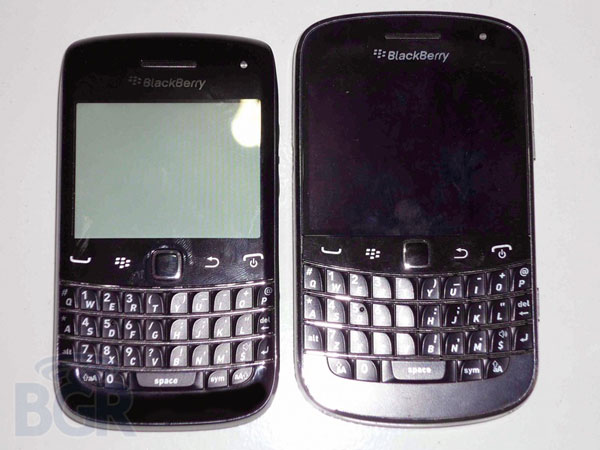
Research In Motion has released details about two of its still-unannounced handsets, the BlackBerry Bold 9790 Bellagio (pictured above, on left) and the Curve Touch 9380. Since the information about the two new BlackBerry smartphones appeared on the company’s developer blog, however, it would seem that the data release was intentional, but not intended to serve as an official announcement about the devices.
The spec details for the new BlackBerry handsets were part of a post meant to tell developers what resolution to expect on the displays of upcoming devices.
Regardless of RIM’s intentions for releasing the phone specs, the cat’s out of the bag on the new handsets. And, unfortunately for RIM, it doesn’t appear that either will serve as a game-changer for the company, which has seen its popularity dwindle around the world.
According to RIM’s post, the Curve Touch 9380 will have a 3.2-inch display with a resolution of 480×360, which equals out to 189-pixels-per-inch. The Bellagio 9790 will have a smaller, 2.44-inch screen with the same resolution, giving it a higher, 245-ppi.
In addition to the screen details, it’s rumored that the Bellagio will come loaded with 8GB of internal storage, NFC mobile payment capabilities, and a 1.2GHz processor. The Curve Touch will reportedly have an 800MHz processor, a 5MP camera capable of shooting 720p HD video, 1GB of internal storage and NFC capabilities.
While these specs are fine, but fairly run-of-the-mill compared to other available devices, RIM really needs to release a show-stopper device to regain lost ground in the smartphone market. In addition to a drop in sales, RIM also suffered through a recent three-day network outage, which left users around the globe without email, Internet or BlackBerry Messenger services. A new survey shows that one in five BlackBerry users now say they are considering switching to another handset brand due to the network blackout.
Via Pocketlint/[Image via BGR]


